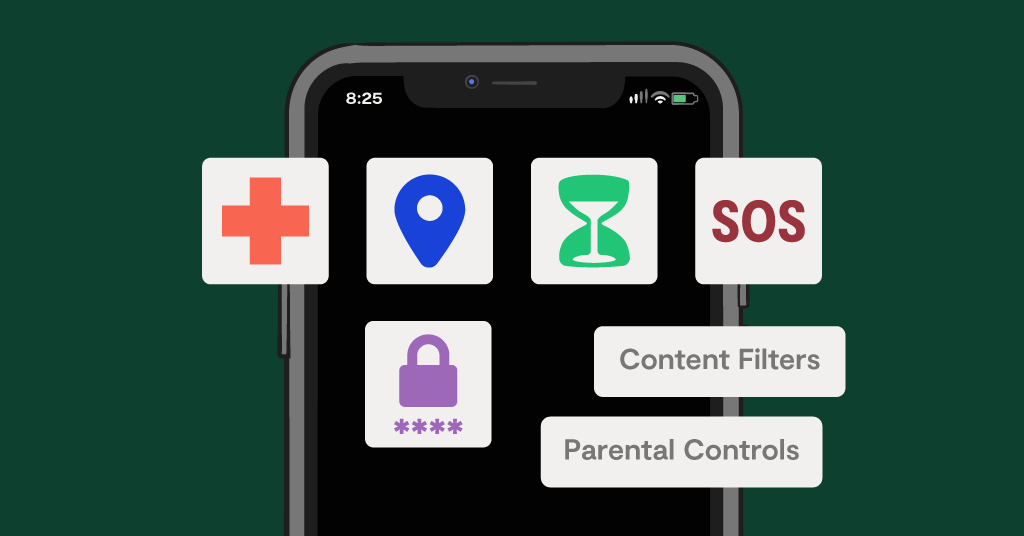Do you ever remember hearing older generations talk about a club in a college town called “The Library?” It was a common joke based on the fact that students could honestly state that they “were headed to the library” if asked.
This is just one example of using language to subvert expectations and rules, and today’s younger generation is extremely good at it. Known as “algospeak,” teens are changing language in real-time to evade social media moderation, a practice that seeks to ban keywords around potentially inflammatory or dangerous content. In this blog post, we’ll teach you all about why this happens, how it works, and provide examples of current algospeak.
What Is Social Media Moderation?
Social media companies rely on user-generated content (UGC) to fill their platforms with a never-ending stream of images, videos, and words. As you can probably imagine, people post a lot of different types of content, and some of it can be pretty scary. Moderation is a company’s way of trying to enforce some rules and manners on the content users create. Generally, this is done in line with published community guidelines, which is where a platform lays out exactly what they aim to allow or block.
And while many social media platforms moderate their content, TikTok moderation is front and center because of how immensely popular the app is — more than 150 million Americans use it. Its community guidelines are robust, detailed, and known to be on the more aggressive side, which is partly how algospeak has become so omnipresent in the online world. TikTok states that “Everyone who joins TikTok has the ability to freely share content on the platform. However, we remove content — whether posted publicly or privately — when we find that it violates our rules.”
How Does TikTok Moderation Work?
Companies like TikTok use a combination of AI-generated moderation (programs scan content for keywords and flag potential infringements) and real-life human moderators who review flagged content. A lot of the time, they catch the bad stuff — videos promoting disordered eating, triggering posts about suicide or self-harm, dangerous physical viral challenges, and purposeful misinformation.
Other times, though, it’s catching (and automatically removing) things that aren’t against the community guidelines. This could look like marking a historical, educational video about Martin Luther King’s assassination as “violent or graphic content.” Any mention of an LGBTQ person can get automatically flagged, even if it’s just used as an adjective.
You can always appeal a video getting removed due to community guideline violations, but it’s not always successful, which makes it frustrating for many users.
Algospeak: A Modern Solution to a Modern Issue
Having TikTok take down your video doesn’t stop users, however — it’s just forcing them to get more creative to work around the algorithmic filters. Enter “algospeak,” a new and ever-evolving set of terms that people use to express themselves without triggering sensitive social media algorithms.
Like we mentioned earlier, both camps of people — folks trying to actively promote bad stuff and also regular people just trying to get around what is essentially censorship — are now using algospeak. But what exactly is algospeak? Here are the three main categories you’ll find.
Alternate spellings
Users on TikTok quickly figured out that slight adjustments to the way a flagged word is spelled can sneak it by the filters. One of the most common examples is using “seggs” instead of “sex.” This would eventually morph into “s🥚sy” with the egg emoji replacing “egg” in “seggsy.” Another example is using “le$bean” instead of “lesbian,” which eventually transformed into “le dollar bean” because of how the voice-to-text caption feature pronounced it.
New words
Coming up with new words to replace existing terms is another way users get around social media moderation. During the COVID-19 pandemic, for example, TikTok was flagging nearly any mention of the word “pandemic” in an effort to curb the spread of misinformation. For users that just wanted to mention it in passing, they took to calling it the “panini” or the “pandemonium.”
Emojis
Parents are probably the most familiar with this version of algospeak, as the act of using emojis to represent explicit imagery — think the eggplant or peach emoji — have been around for years. But new emoji meanings are created constantly, and they can be relatively obscure for folks not in the know. A recent example is the 🍉 emoji, which means support for Palestine because the emoji’s colors match that of the country’s flag.
Recent Examples of Algospeak
🌽, corn, corn star — used to refer to porn
⬛️ 🟧 — also means porn (because popular porn site PornHub has these colors in its logo)
Sewer slide — suicide
Seggs, seggsy — used to refer to sex
Unalive, unalived — can mean dead, kill, or killed
Accountant — sex worker
🍉 — Palestine
Barcode — refers to self-harm scars, which can look like a series of sharp lines
Worried About Algospeak? Bark Can Help
Algospeak isn’t limited to just TikTok and social media. Eventually, these terms spill over into everyday communication, including text messages and other platforms. This is where Bark’s advanced content monitoring comes in.
Our technology scans your child’s online activities looking for potential dangers, and it’s fluent in the latest iterations of algospeak. Context is crucial to our monitoring tool, and we’ve been training it for nearly a decade to learn and adapt to the ever-changing nuances and trends of digital language. This means you’ll get more insight into your child’s world and a better understanding of the potential dangers facing them.
Bark’s monitoring comes with our app, and you can start a free, 7-day trial to see how it works. We also offer the Bark Phone, which comes with all of our parental controls built-in, including exclusive features like contact approvals and daily time limits. Millions of families trust Bark to help keep their kids safe online — come learn why our products are game-changers.
Read more
Bark helps families manage and protect their children’s digital lives.






